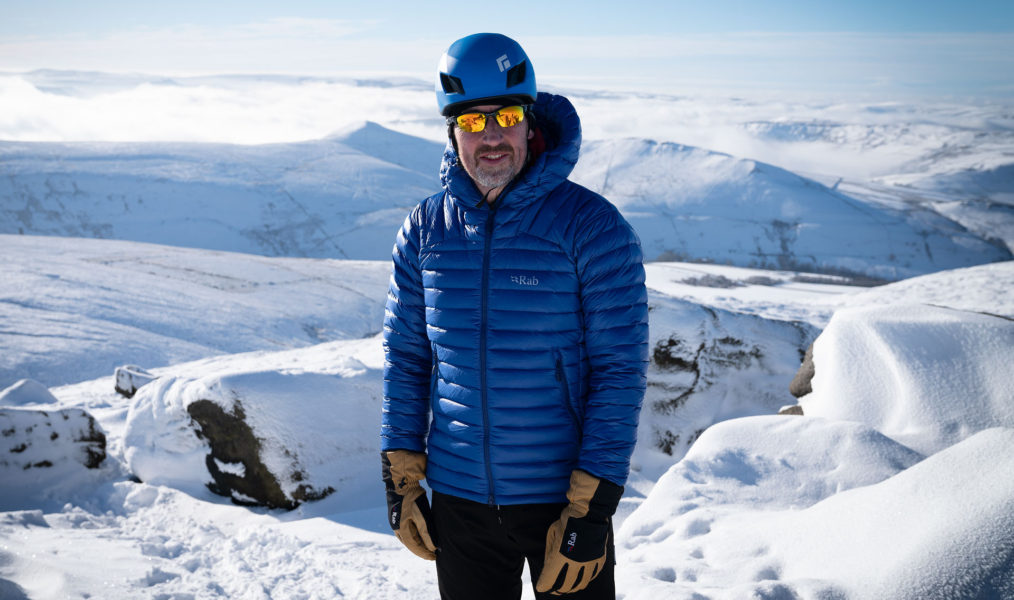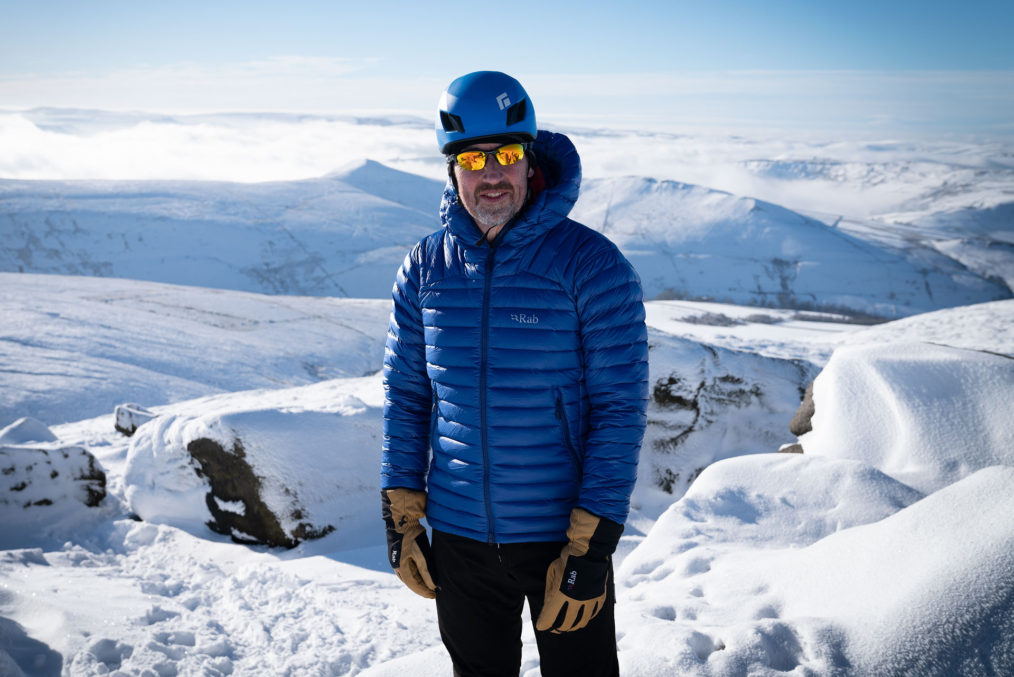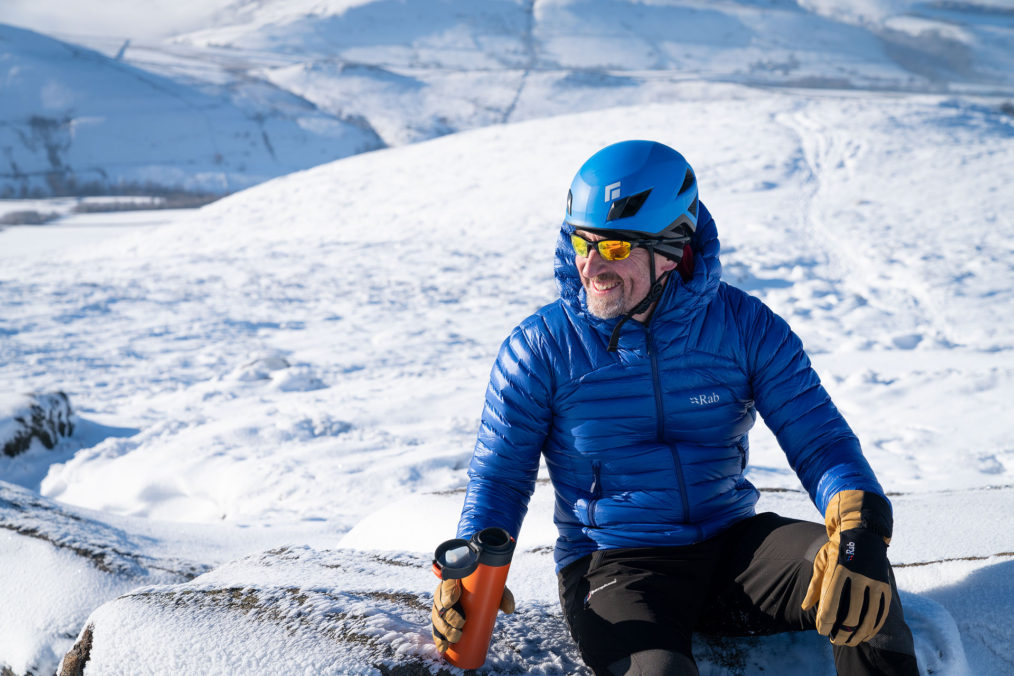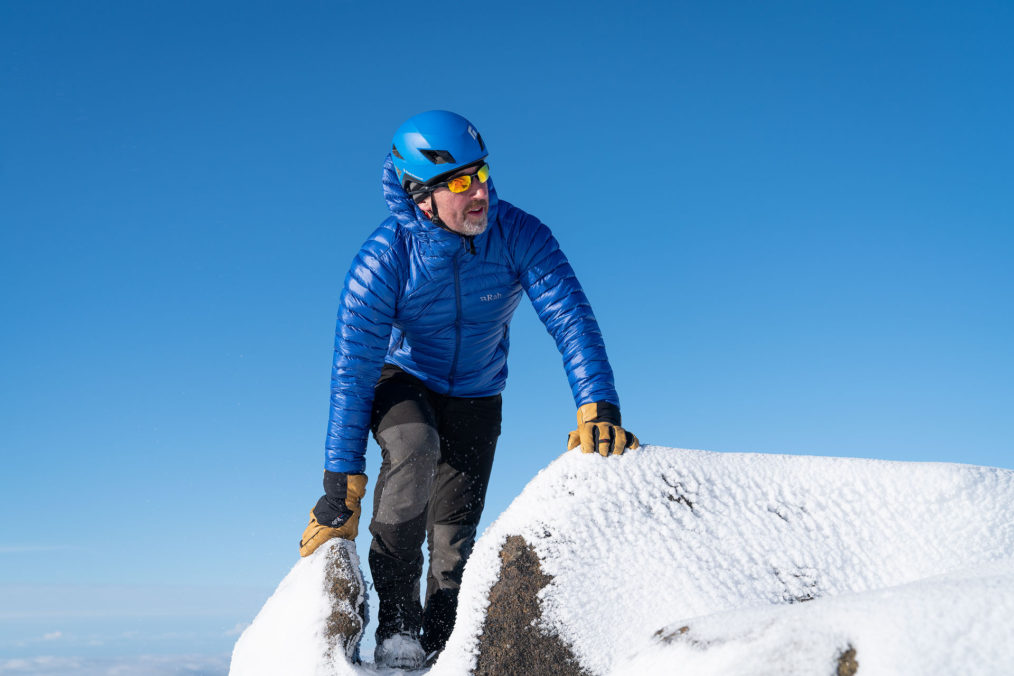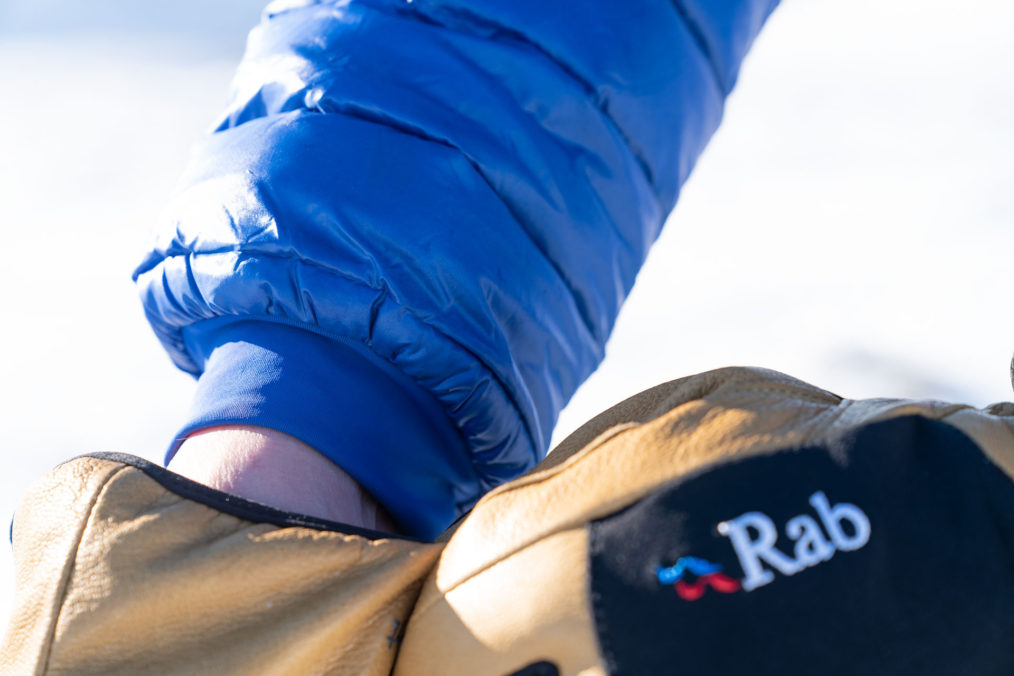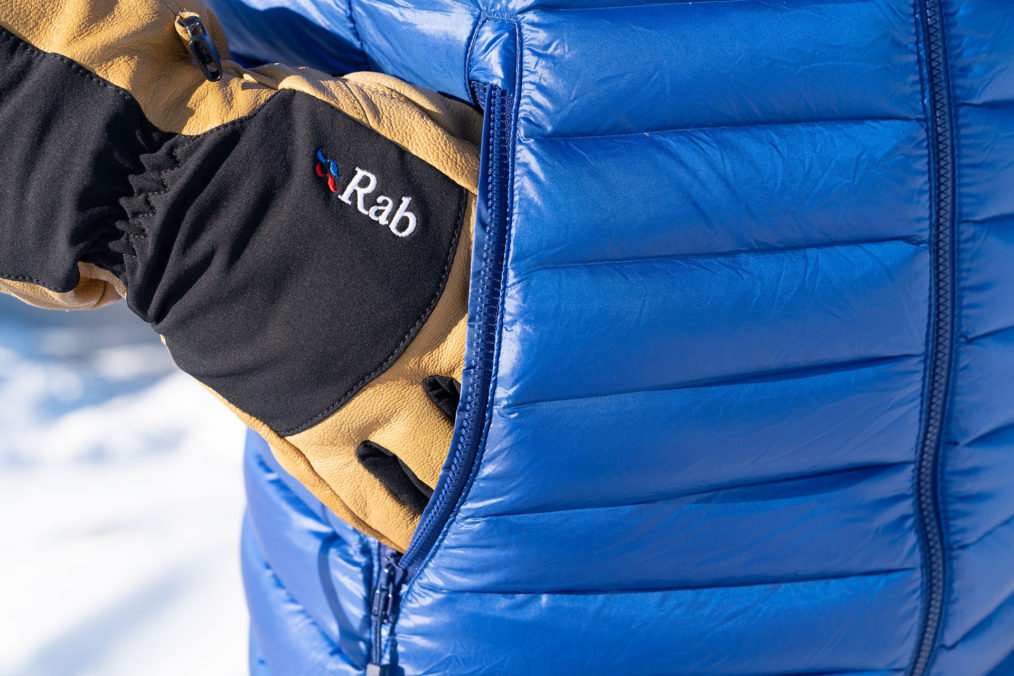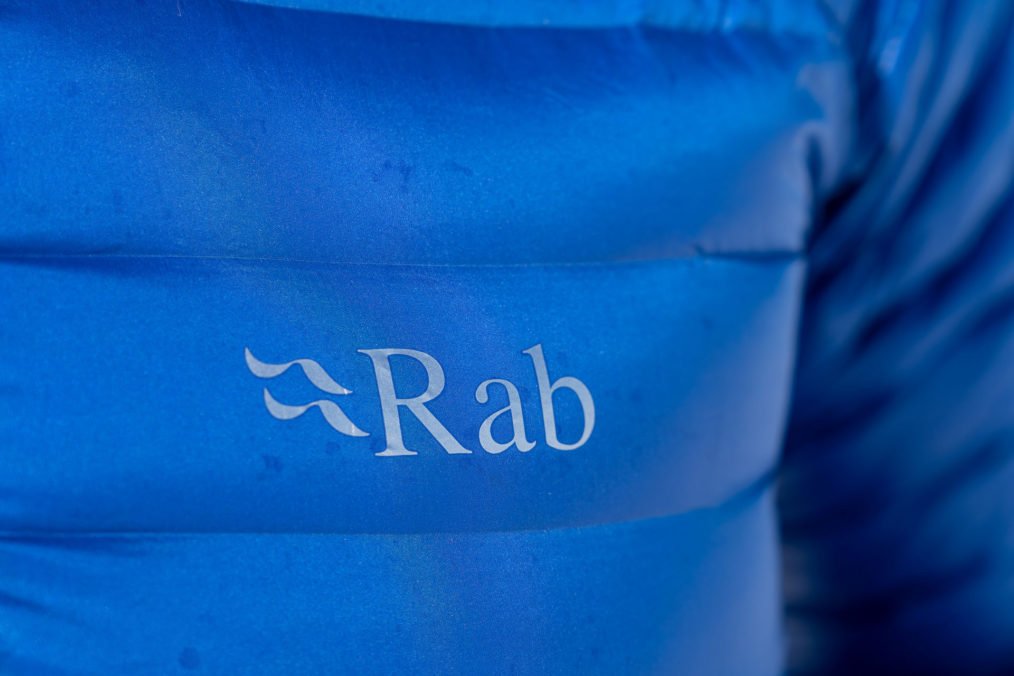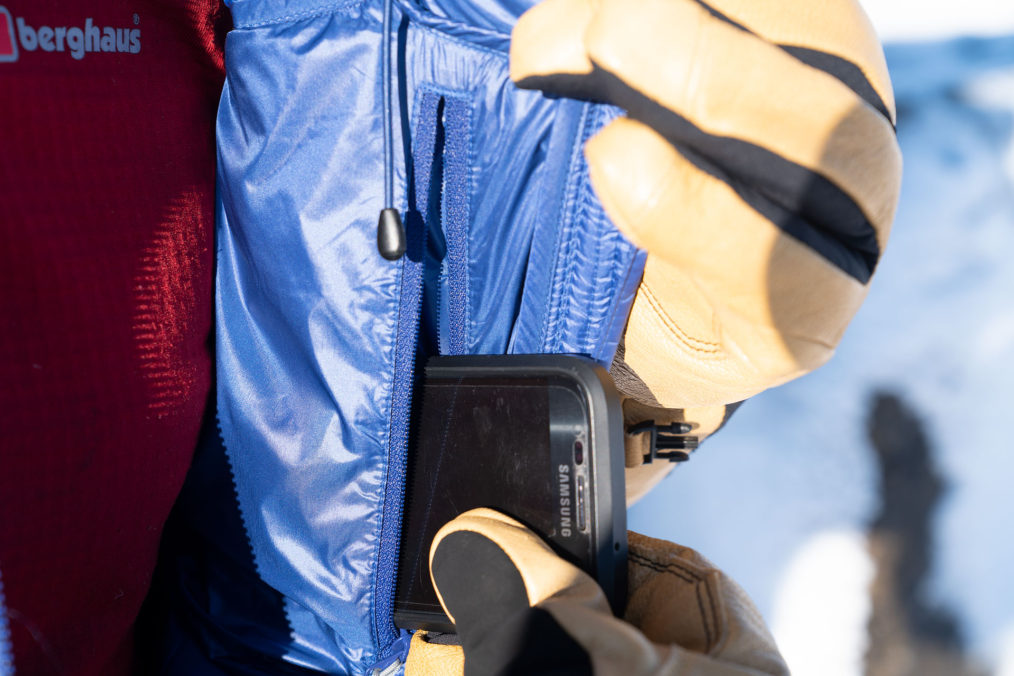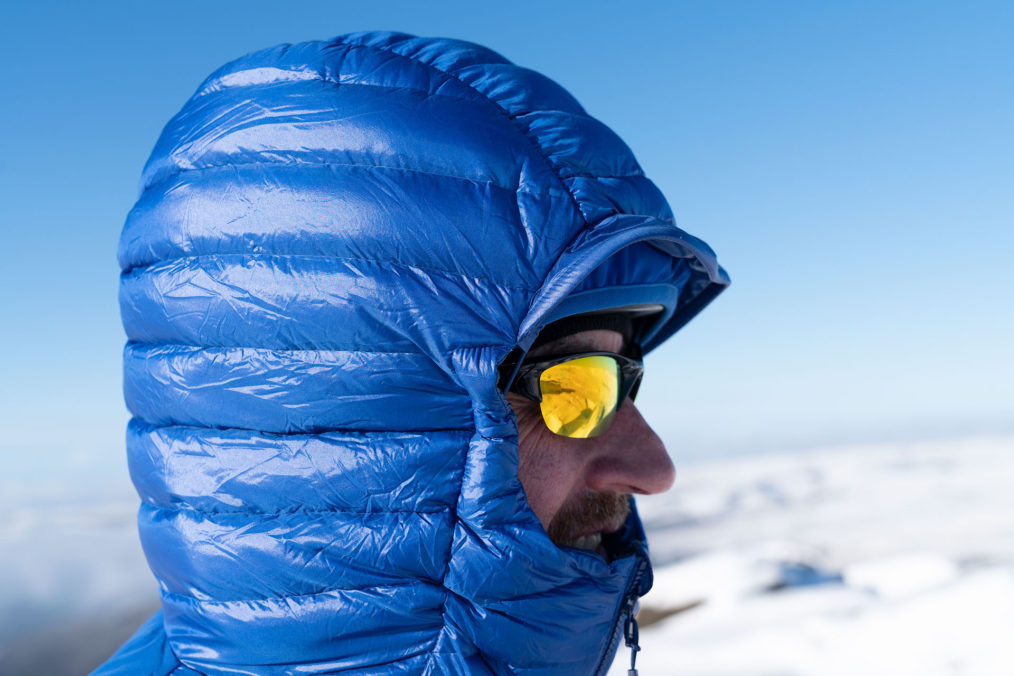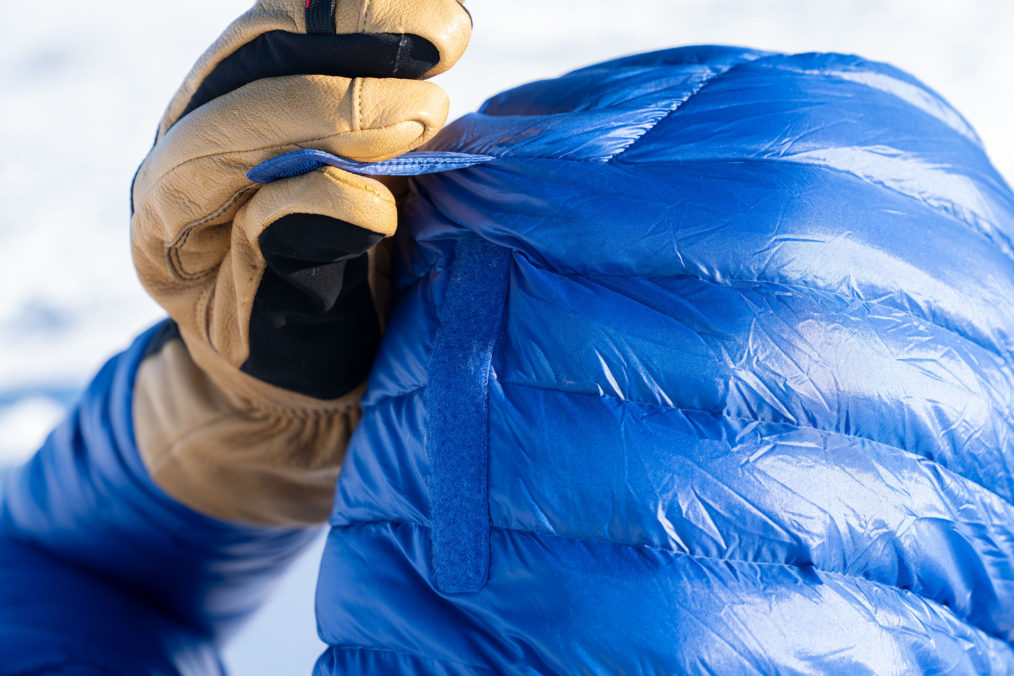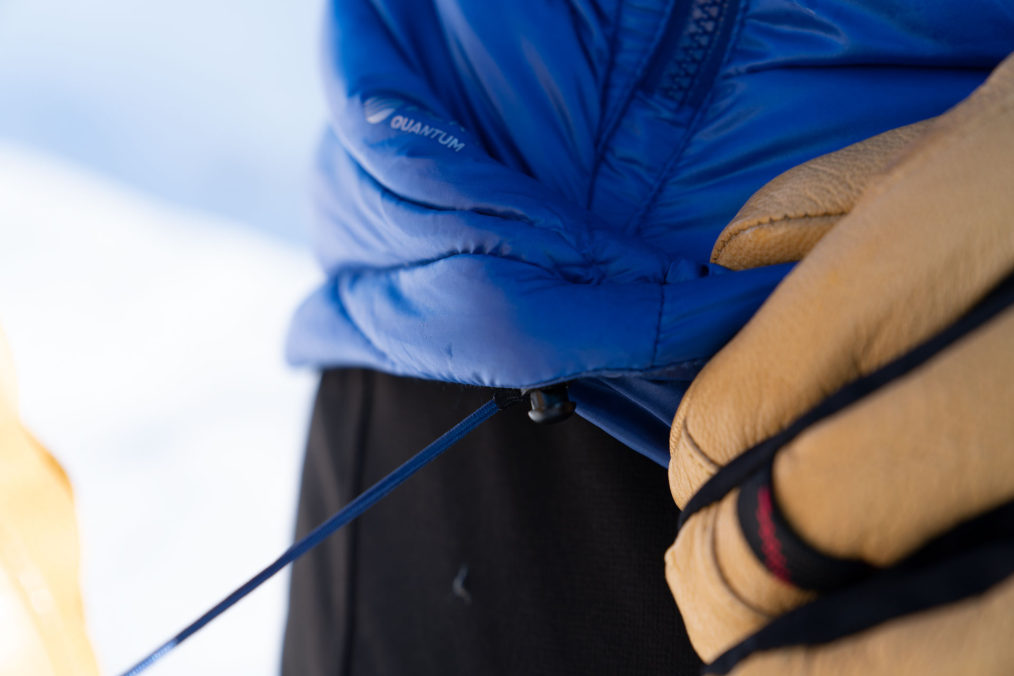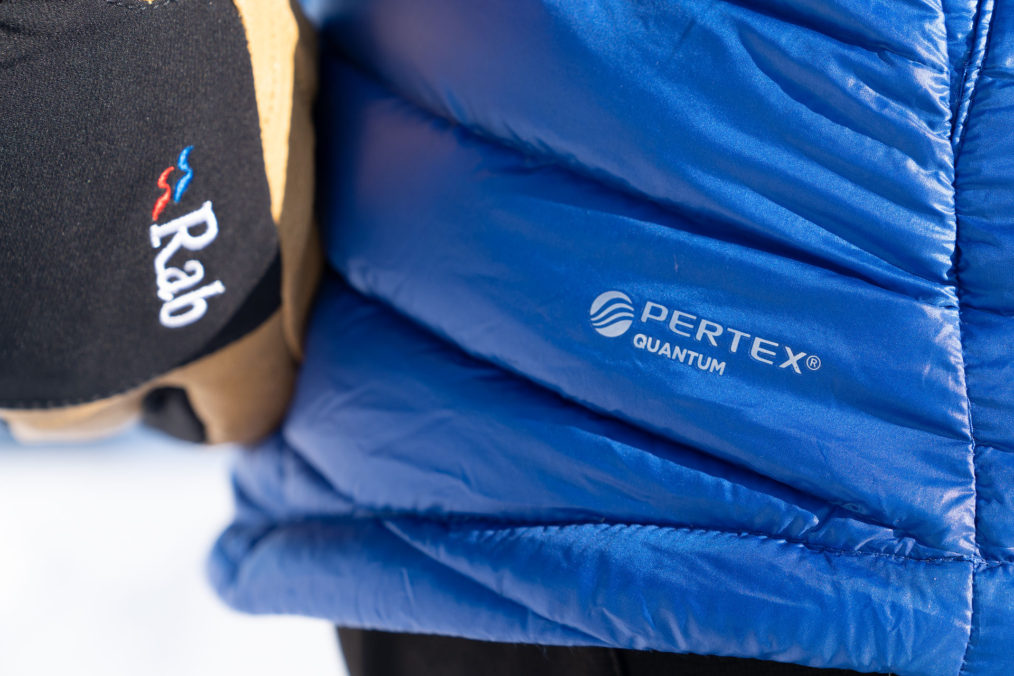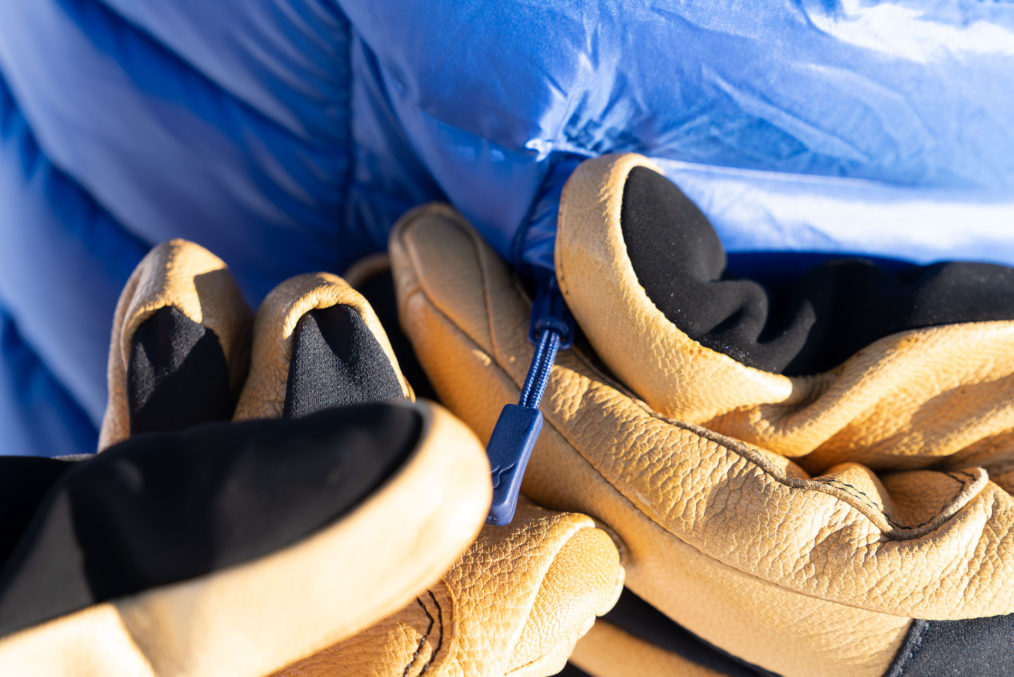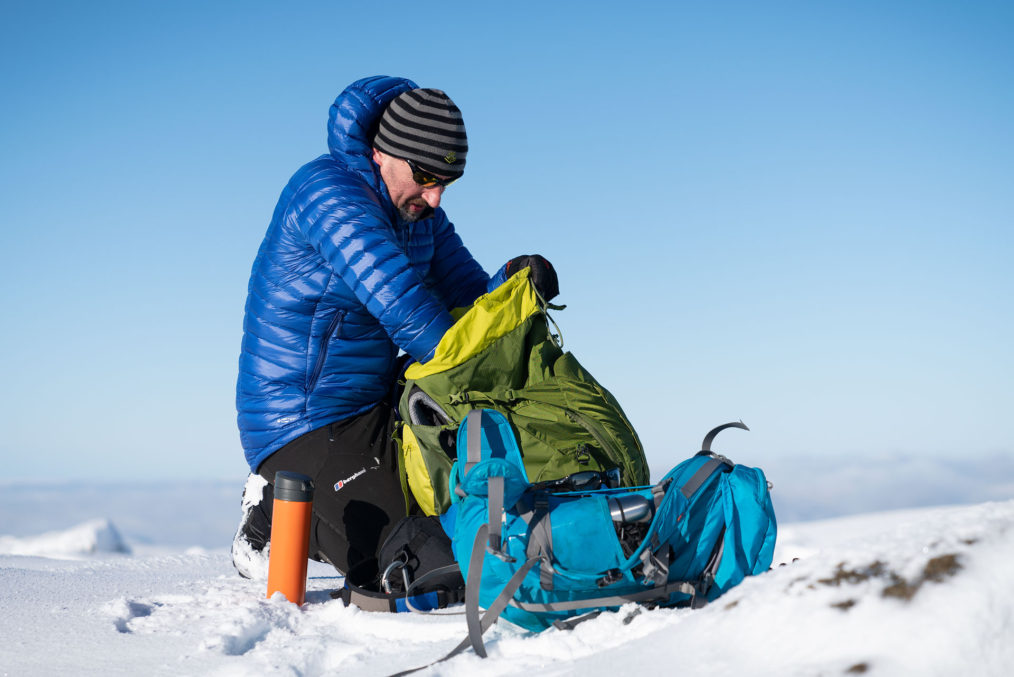Jon Doran braves the Peak District winter to test the top model in Rab's Microlight Jacket range...
Rab’s new top-tier Microlight Down Jacket has a secret weapon in the shape of futuristic Pertex Infinity Weave fabric straight out of The Matrix. It eliminates stitch-lines between baffles, which in turn improves wind resistance in bitter arctic gales. Is it noticeable? You bet! In our book this is arguably the best lightweight down all-rounder out there.
Rab overhauled its popular Microlight Down Jacket range this winter and not only did the bog standard micro-baffled jackets that have been in the range for around a decade now get a comprehensive rejig, the brand also introduced this, the new Microlight Summit Jacket, a sort of premium, Rolls-Royce jacket aimed squarely at climbers and mountaineers. Available in both men’s and women’s versions.
So what makes it different?
It costs £40 more than a Microlight Alpine and weighs a claimed 15g less – our medium test jacket weighs in at 422g – despite having exactly the same amount of identical Nikwax down inside. And it comes in just three colours versus seven for the standard jacket.
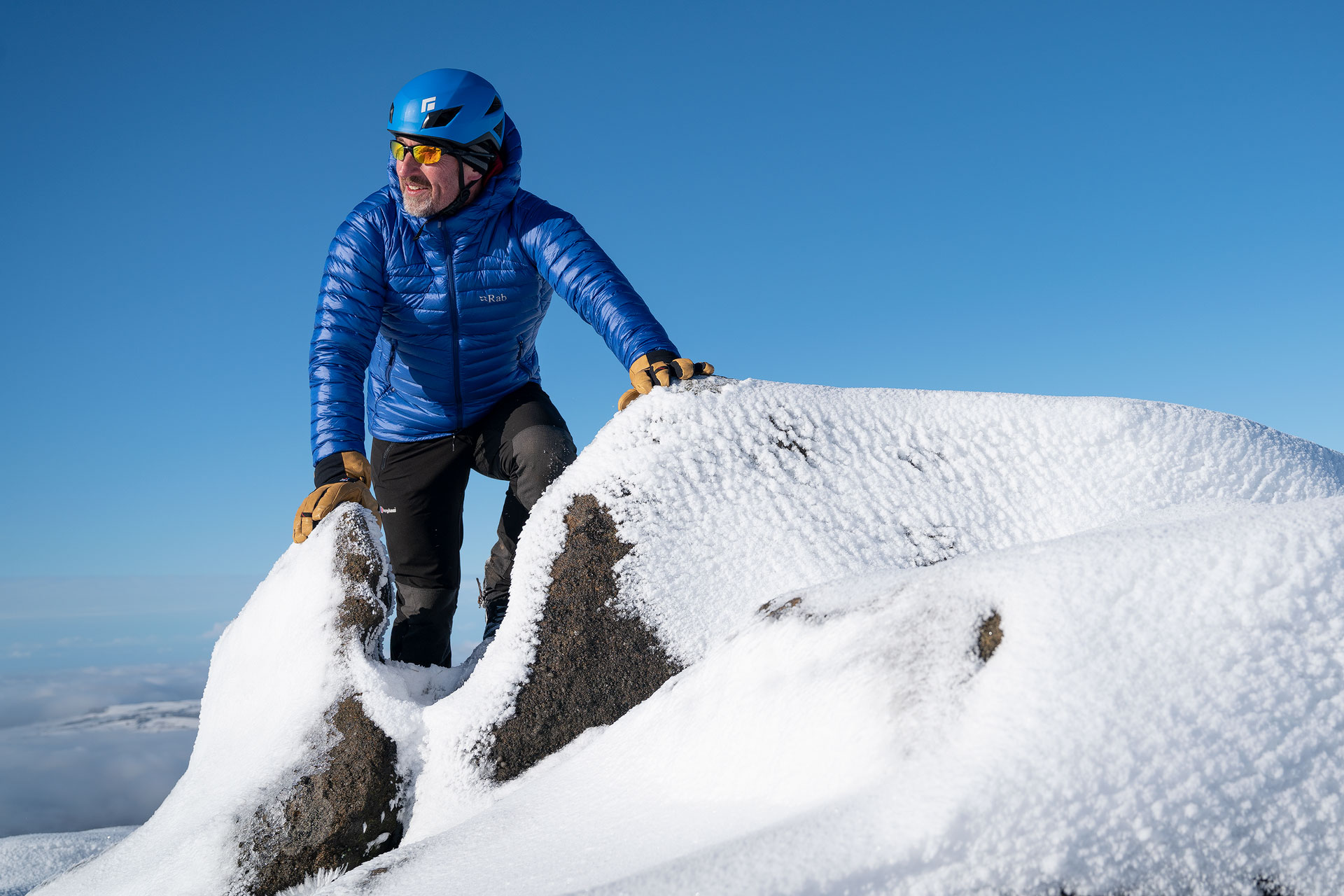 To Infinity and beyond
To Infinity and beyond
Big deal eh? But the really important difference is in the fabric and what it brings to the construction of the jacket. As with the Alpine, it’s Pertex Quantum, but crucially it’s a new fabric called Quantum Infinity Weave. It’s a difficult concept to get your head round, but the new material is woven in such a way that it forms a series of tubes, it’s kind of what Neo from the Matrix would produce if he were left with a set of very fine yarn and some knitting needles for ten minutes. Or something like that.
All you really need to know is that Infinity Weave means that what would normally be the perforated, stitched seams between each down compartment – technically the baffles – are complete sealed with no tiny stitch holes. And that, in theory, means that the jacket should be more or less windproof in those areas, which should also make it warmer in real life use. More about which later.
It’s not the only difference. The Summit also gets a helmet hood, albeit with internal elastication to help with fit when you’re not wearing a lid. It has a slightly different cuff construction to fit under or over mountaineering gloves depending on your preferences. And the chest pocket, which on the standard jacket is external, sneaks inside where it can keep your phone warmer on sub-zero mountain missions. Like the other Microlight jackets it also gets some neat new touches like diagonally-cut, harness-friendly hand-warmer pockets, which are designed not to gape open like vertical ones. A small refinement for sure, but a neat one. The biggy though, is that fabric.
How it rolls
I’ve never been a huge fan of micro-baffled down jackets. They either seem to be so light and filmy that they barely offer any discernible warmth or, if heavier, not as warm for the weight as jackets with bigger down compartments. It doesn’t help that all those stitched baffles imperceptibly leach heat, particularly when it’s windy. But here’s the thing, the Microlight Summit bucks that trend. It’s the first micro-baffled down jacket that properly makes sense to me.
First, the water-resistant, Nikwax 750FP, ethically-sourced down feels reassuringly densely packed into the jacket, there’s plenty of it in other words. And that in turn means the down feels resilient and less likely to get compressed if you wear it under a shell jacket. The cut is excellent in a close-fitting, longer-than average way. That’s efficient both for insulation and layering with other sleek-fitting technical kit.
It’s nicely made and finished too with properly thought-through components like YKK Vislon zips and glove-friendly adjusters, the hood gets Rab’s neat flexible, synthetic peak stiffening thing – like wire but without the potential breaking and deformation.
Performance
All of which is nice, but what really matters is that it feels instantly and decently warm. Not in a ‘big coat’ sort of way, but in a properly, ‘worth carrying about’ warm stylee. The fit, as already discussed, is excellent. Long enough to sit under a harness or, at a pinch, over one. The main-zip is double-ended, so you can access ‘important areas’ easily. The hand pockets sit just above a harness or pack belt as well. Where the Summit scores big bonus points is with that Neo-knitted Pertex Infinity Weave construction. Conventional, stitch-through down jackets are great in still conditions, but throw in a properly icy, high velocity wind and you can feel heat leaking through the stitched baffle lines.
The Summit doesn’t do that. I’d say it’s effectively windproof and that means in sub-zero conditions where with a comparable, stitched construction, you’d need to throw a wind-shell over the top, with the Summit you simply don’t need to. For simple hiking that’s arguably not a big deal, but if you’re picking your way up an alpine face or along some Scottish winter ridge line, it’s one less thing to mess about with when you’re roped-up and tooling along. It’s a bonus in other situations too, but active, technical use is arguably where it makes the most difference.
 Active abuse
Active abuse
Would you use the Microlight Summit as technical outer layer? No-one’s pretending it’s the ideal garment for thrutching up some mixed chimney, but for cleaner climbing the fabric feels reasonably robust for a lighter-weight material. It’s certainly appreciably tougher than the ultra-lightweight 7D Quantum GL that Rab uses on its lightweight down jackets like the Infinity and Zero G, which are much more about packing away until you need them.
The downsides of active use is that in anything around zero or above, the Summit quickly becomes too warm and somewhat sweaty if you move at more than a moderate pace. That’s having two layers of windproof fabric and a layer of down plus no stitch-lines between you and the outside world. Not a big issue if you’re moving steadily in very low temperatures, but worth knowing.
Also relevant for general use is the helmet hood. With a lid it’s very good indeed, will cover the lower part of your face and doesn’t restrict movement. Worn over a beanie though, the fit is slightly compromised, but still acceptable if you tab the Velcro strap adjuster on the back down to minimum volume and snug up the front cords. The one downside of all this is that despite neat internal elastication your head will still move within the hood enough to make, say crossing roads something of a death lottery – don’t ask how I know etc. Also the adjustment cords sit inside the jacket, so tweaking them with bulkier gloves can be a little tricky. To be fair, everything else on the jacket bar the lower zip-pull is pretty well glove friendly.
Talking of gloves, the stretch cuffs will sit over a shorter, medium weight mountain glove no problem – if you had really thick wrists, it might be a bit of a squeeze, but longer gauntlet-style ones like the Rab Guide glove in the images, work better layered over the sleeve. A Velcro closure might potentially allow over or under choices with bulkier gloves, but would also be more complicated and create extra bulk in the area. Plus the nylon, stretch cuff allows you to roll up your sleeves for quick cooling, something I didn’t even realise I’d consciously done until I saw a couple of images from the photoshoot. Ingenious and useful.
The internal zip-pocket sits phones and other devices closer to the body for added warmth and battery preservation at the slight cost of easy access. There’s a minimal but effective chin/beard-guard at the top of the zip strip. One small detail is that the jacket comes with a small stuff-sac – 12 grammes if you were wondering – but will also pack into a hand-pocket if you prefer. It would be nice if one of the pocket zips was designed to ease use in that mode. But that’s hardly a deal breaker.
One last thing, I’ve barely mentioned it, but the water-resistant Nikwax down gives you the confidence that the jacket will survive light rain, wet snow and that horrid sleety, hybrid stuff that no-one knows what to call it. In other words, you can wear it without being paranoid that a light cloudburst will reduce things to soggy porridge levels. It seems to work and the lack of stitching probably helps there too.
Verdict
The quick distillation of a somewhat extended test, is that we really like the Rab Microlight Summit. I’d go so far as to say that it’s the first down micro-baffled jacket I properly get on with. It’s a killer combination of excellent fit, well thought-through features and that Infinity Weave fabric construction that really does noticeably improve performance in super-cutting, chilled mountain winds. Throw in enough top-notch, water-resistant down to keep you decently warm and a well-designed hood, pockets and other detailing and it’s a keeper. It works particularly well for mountaineers and climbers who’ll arguably benefit most from that improved wind proofing, but it arguably also works really well for more general mountain use.
The sleek cut is efficient and also layers well under a more protective shell should you need it. Which leaves the big question of whether it’s worth paying the premium over the bog-standard Microlight range with its conventional stitched seams and non-helmet hood – note there’s also a longer cut Microlight Alpine with hood if you want a more generous length than the standard version. I’d say cautiously yes if you’re someone who’s genuinely going to use the jacket mostly on the hill where the extra wind protection does pay off. No if it’s more of a general call for day-to-day use and sitting about camp or in the pub / hut where wind resistance is less of an issue.
In either case, I wouldn’t be using it for strenuous active stuff where it gets somewhat sweaty fast, but for slower, technical movement, it gives climbers an extra option compared to the lighter jackets in Rab’s range like the Infinity or Zero G. I still don’t quite understand how that fabric is produced though…
Links
Men’s: https://rab.equipment/uk/microlight-summit-jacket
Women’s: https://rab.equipment/uk/women-s-microlight-summit-jacket


